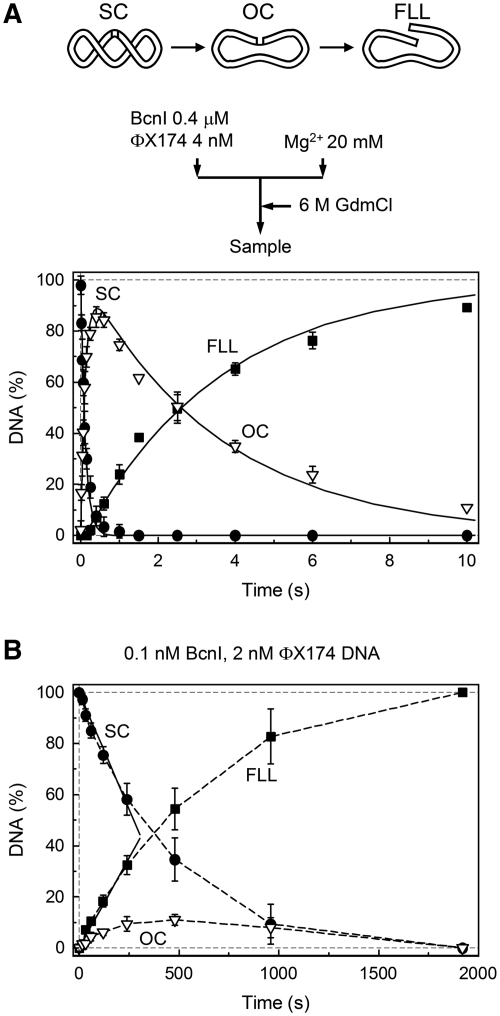Figure 2.
BcnI reactions on the supercoiled ΦX174 DNA. The scheme above panel (A) illustrates the various DNA forms that can exist during BcnI reactions on supercoiled phage ΦX174 DNA bearing a single BcnI recognition site. (A) Single turnover reaction with 2 nM of DNA substrate and 200 nM of BcnI. The flow diagram above the graph schematically depicts the experiment performed in a quench-flow device (see ‘Materials and Methods’ section for details). Three DNA forms are shown: supercoiled DNA (SC, filled circles), open circular intermediate (OC, down triangles) and full length linear product (FLL, filled squares). All data points are presented as mean values from three independent experiments ±1 SD. Continuous lines are the best fit to the reaction equation SC − k1→OC − k2→FLL that gave k1 = 8.3 ± 0.2 s−1 (the rate constant for nicking of the first DNA strand) and k2 = 0.27 ± 0.1 s−1 (the rate constant for cleavage of the second DNA strand). (B) Steady-state experiment. All data points are mean values from seven independent experiments ±1 SD. The reaction contained 2 nM DNA and 0.1 nM BcnI. The initial SC cleavage and FLL formation rates (0.0036 ± 0.0003 nM s−1 and 0.0028 ± 0.0003 nM s−1, respectively), determined from linear fits (solid lines), indicate that BcnI converts 77% (ratio 0.0028/0.00365) of the initial substrate SC into the final reaction product FLL during a single binding event. The reaction kcat equals 0.036 ± 0.003 s−1 (0.0036 nM s−1/0.1 nM BcnI).

